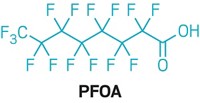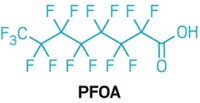Advertisement
Grab your lab coat. Let's get started
Welcome!
Welcome!
Create an account below to get 6 C&EN articles per month, receive newsletters and more - all free.
It seems this is your first time logging in online. Please enter the following information to continue.
As an ACS member you automatically get access to this site. All we need is few more details to create your reading experience.
Not you? Sign in with a different account.
Not you? Sign in with a different account.
ERROR 1
ERROR 1
ERROR 2
ERROR 2
ERROR 2
ERROR 2
ERROR 2
Password and Confirm password must match.
If you have an ACS member number, please enter it here so we can link this account to your membership. (optional)
ERROR 2
ACS values your privacy. By submitting your information, you are gaining access to C&EN and subscribing to our weekly newsletter. We use the information you provide to make your reading experience better, and we will never sell your data to third party members.
Persistent Pollutants
California considers advisory level for PFHxS in drinking water
Recommended concentration for this PFAS is lower than any other state regulatory level
by Cheryl Hogue
March 23, 2022
California regulators are recommending that each utility in the state notify its customers if it finds perfluorohexane sulfonic acid (PFHxS) at a level greater than 2 parts per trillion in drinking water.

"If 2 ppt is below the PFHxS detection limit of currently available and appropriate technology, our recommendation is to set the notification level at the lowest level that can reliably be detected," a spokesperson for the California Office of Environmental Health Hazard Assessment (OEHHA) tells C&EN in an email.
The OEHHA calculated the recommended 2 ppt level based on published data linking PFHxS exposure to thyroid, liver, and developmental toxicity and to additional adverse health effects other than cancer.
PFHxS is a member of the large family of per- and polyfluoroalkyl substances (PFAS) and is a persistent pollutant. Biomonitoring studies have found it in the blood of almost all people in the US who were tested.
3M formerly manufactured PFHxS in the US but phased out production of the molecule two decades ago. PFHxS was used in stain-resistant fabrics, in fire-fighting foams, in food packaging, and as an industrial surfactant. The substance also can form in the environment from transformation of some other PFAS.
Before California’s PFHxS notification level for drinking water can take effect, the State Water Resources Control Board must approve it.
CORRECTION:
This article was updated on March 24, 2022, to reflect an amended comment from the California Office of Environmental Health Hazard Assessment spokesperson. The spokesperson says the recommendation is to set the detection limit to the strictest level of detection if 2 parts per trillion can’t be detected with available and appropriate technology. The original statement was that 2 ppt is below current technologies’ detection limit.





Join the conversation
Contact the reporter
Submit a Letter to the Editor for publication
Engage with us on Twitter